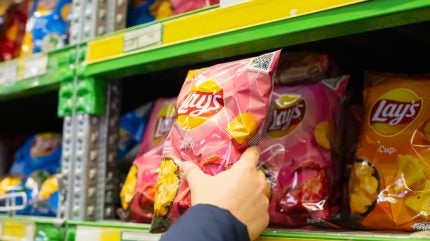
What people buy in supermarkets and online is influenced as much by the packaging as the product itself.
In the food and fast-moving consumer goods (FMCG) sectors, packaging has become a silent salesperson—protecting products, conveying information, and shaping the decisions of increasingly conscious consumers.

Discover B2B Marketing That Performs
Combine business intelligence and editorial excellence to reach engaged professionals across 36 leading media platforms.
Sustainability influences buying habits
Shoppers are no longer indifferent to the environmental impact of what they purchase. Growing awareness of climate change and waste has pushed food and FMCG brands to prioritise sustainable packaging.
Recyclable cartons, compostable films, and biodegradable plastics are rising in popularity as companies respond to consumer demand for greener choices.
Research shows that many buyers actively select products packaged with eco-friendly materials, even when alternatives are available at a lower price.
Portion-controlled packs, lightweight formats, and easy-to-recycle solutions are especially popular among urban consumers seeking both sustainability and convenience.

US Tariffs are shifting - will you react or anticipate?
Don’t let policy changes catch you off guard. Stay proactive with real-time data and expert analysis.
By GlobalDataBrands that achieve this balance often find themselves at the top of a shopper’s list.
Innovation adds value and trust
Beyond sustainability, innovation in packaging is helping consumers make more informed and confident choices.
Smart packaging technologies—such as freshness indicators, QR codes, and interactive labels—allow buyers to track sourcing, check allergen information, or verify authenticity.
In food packaging, these tools provide reassurance about safety and quality, which has become increasingly important in global markets.
Functional innovation is also shaping choice. Resealable pouches, single-serve packs, and lightweight bottles add convenience that appeals to busy lifestyles.
Retail-ready packaging, designed for quick shelf display, improves availability and presentation, further influencing which products consumers reach for first.
Packaging as a driver of brand loyalty
For many shoppers, packaging is the first and most lasting impression of a brand.
Clean designs, bold colours, and simple labelling can suggest quality, health, or luxury, depending on the message a company wants to send.
In competitive FMCG markets where products often look similar, packaging design becomes the deciding factor.
Increasingly, consumers favour brands that use packaging to communicate values such as sustainability, ethical sourcing, or social responsibility.
Messaging around recyclability or carbon footprint resonates with buyers who want their purchases to reflect their principles. In this way, packaging not only influences the first purchase but also builds long-term loyalty.





